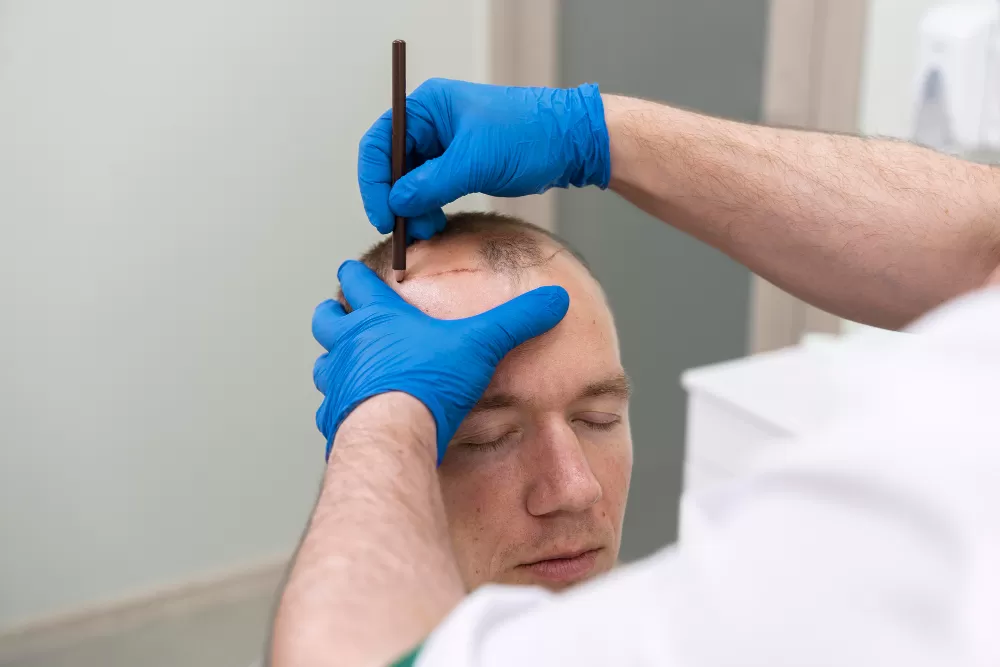Hair transplantation is a promising solution for many individuals seeking to improve their appearance. However, not every procedure delivers the expected results. When the first transplant fails, a "revision hair transplant" becomes necessary. But what exactly is a revision transplant, who is it for, when should it be done, and how does the process work? In this article, you'll find comprehensive answers to all these questions.
What Is a Revision Hair Transplant?
A revision hair transplant is a secondary corrective procedure performed when the desired outcome was not achieved from the initial transplant. This procedure aims to correct mistakes from the first session, improve unnatural appearances, or provide sufficient hair density.
In other words, a revision transplant is a remedy for a failed hair restoration. Sometimes it's needed due to aesthetic concerns, and sometimes due to technical inadequacies.
Why Do First Hair Transplants Fail?
There are several reasons why a hair transplant might fail:
1. Improper Use of Donor Area
If grafts are taken incorrectly or excessively from the donor area (usually the back of the head), both the success of the transplant and the appearance of the donor site can be negatively affected.
2. Incorrect Transplant Technique
Improper angle and direction during graft placement can result in unnatural-looking hair. Additionally, planting too many or too few grafts can lead to poor aesthetic outcomes.
3. Poor Hygiene and Sterilization
Operations performed in unsterile environments increase the risk of infection and reduce graft survival.
4. Inexperienced or Inadequate Medical Team
A lack of experience can lead to poor planning and execution.
5. Insufficient Hair Density
In some cases, the desired density is not achieved, which affects both appearance and patient confidence.
When Should a Revision Hair Transplant Be Performed?
A revision transplant should generally be performed at least 6 to 12 months after the initial surgery. This allows time to evaluate the results of the first procedure and gives the scalp time to fully heal. Early intervention can damage both new and existing follicles.
Who Is a Candidate for Revision Hair Transplant?
Individuals in the following situations may be suitable candidates:
- Unsatisfactory results from the first procedure
- Unnatural hairline design
- Damage in the donor area
- Issues with density and coverage
- Complications such as graft loss, crusting, or infection
Pre-Revision Evaluation Process
Before proceeding with a revision, a detailed consultation and analysis is essential. During this process, the following are assessed:
- Condition of the donor area
- Results and issues from the first transplant
- Scalp elasticity and health
- Patient expectations and realistic outcomes
Based on this, a personalized plan is created.
How Does the Revision Hair Transplant Process Work?
1. Planning
The areas requiring correction are identified. The hairline may be redesigned.
2. Graft Harvesting
If sufficient grafts are still available in the donor area, they are harvested. In some cases, grafts may be taken from other parts of the body (e.g., chest).
3. Transplantation Phase
Harvested grafts are carefully implanted into the planned areas at the correct angle and direction. FUE or DHI techniques are often used.
4. Healing Process
The healing process is similar to the first transplant, involving scabbing, shedding, and regrowth stages.
Post-Revision Care: What Should You Watch Out For?
- Avoid contact and friction with the scalp for the first 10 days
- Use prescribed medications and care products
- Refrain from alcohol, smoking, and intense physical activity
- Maintain proper sleeping positions
Regular follow-ups are crucial during the healing phase.
Are Revision Hair Transplants Risky?
When performed by experienced specialists, revision transplants are generally safe. However, as with any surgical procedure, there are potential risks:
- Permanent damage to the donor area
- Still not achieving the desired density
- Infection or graft failure
- Scarring
Choosing a reputable clinic minimizes these risks.
What Are the Chances of Success with a Revision?
With accurate planning and skilled execution, revision transplants can yield very satisfying results. However, the procedure is more challenging than the initial transplant since the donor area may already be partially used and the scalp has experienced trauma.
Still, with the right team and technique, a natural and aesthetically pleasing appearance can be achieved.
Final Thoughts: Don't Lose Hope—There Is a Solution
If your first hair transplant didn’t meet expectations, it can be discouraging. But thanks to modern techniques and experienced professionals, these issues can be corrected. A revision transplant can help you achieve a fuller, more natural-looking head of hair.
The key is choosing the right clinic and a qualified team. Remember, you have a second chance—and it's up to you to make the most of it.





No comments yet. Be the first to comment!